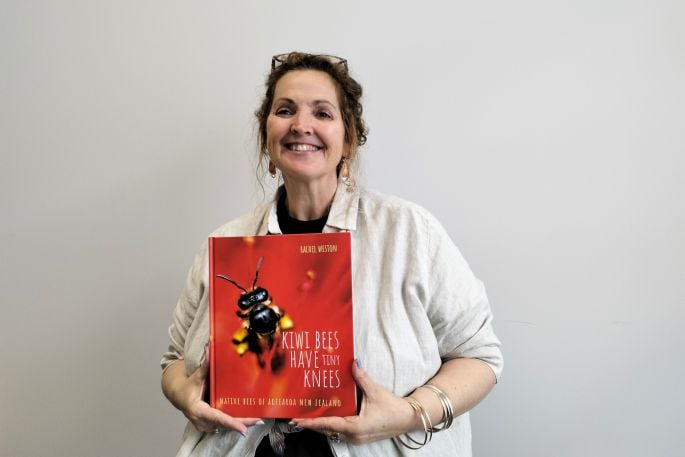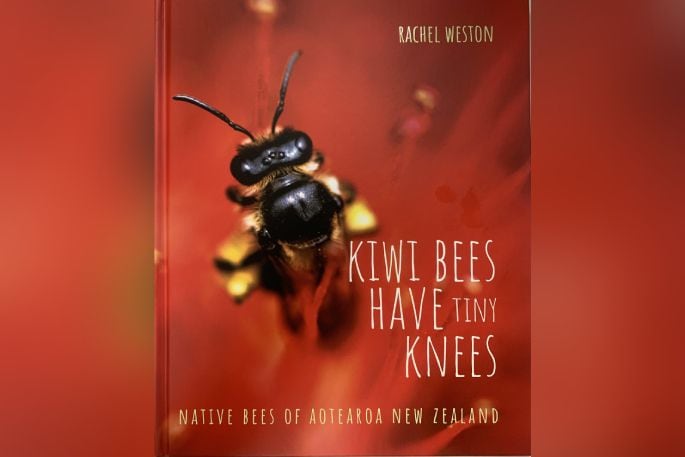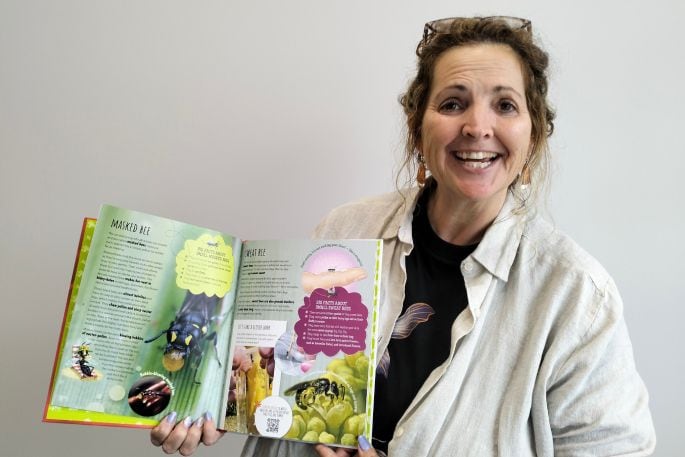The recent launch of Rachel Weston’s new book Kiwi Bees Have Tiny Knees is causing a buzz this weekend, as she and “Bug Man” Ruud Kleinpaste will be keeping an eye out for native bees among the gardens of the Bay of Plenty Garden & Art Festival.
Rachel has already introduced children from nearly 100 local schools to a unique bumblebee experience, following the publication of her previous book Bumblebees Have Smelly Feet. Now, through lively information, charming illustrations and colourful photos of native bees in action, the world of knowledge is opening further.
“I was on our kiwifruit orchard taking photos during pollination because it’s a great time to see all the bees, and I saw these little black bees which I haven’t seen before. I thought ‘what on earth are those?’ They are tinier than a honeybee,” Weston said.

Author Rachel Weston. Photo: Rosalie Liddle Crawford
She phoned the late Dr Barry Donovan, an entomologist who told her she had native bees.
“He said they’re black and there’s 28 different species of native bees in New Zealand. And that they’ve adapted to pollinating the kiwifruit.”
This started Weston on a journey of writing a new educational book for children, with 36 stunning photographs generously supplied by professional photographers and scientists who have been studying the tiny native bees.
“They jumped on board and are super excited about a book coming out on native bees as there hasn’t been a book in New Zealand on them and certainly no book for children.”

The front cover of Kiwi Bees have Tiny Knees. Photo: Rosalie Liddle Crawford
Kiwi Bees Have Tiny Knees is a visual feast, packed with interesting information, diagrams, illustrations and QR codes linking to online videos.
The 28 species fall into three different categories – hairy, masked and sweat bees. Usually, they are found in clay banks and can be mistaken for flies and wasps. They are pollinators, but they don’t make honey.
“Without bees helping to move pollen around, a lot of plants and trees would die out,” Weston wrote in the book.
During the four-day festival, Kleinpaste and Weston will be on the main stage at Bloom in the Bay on the Tauranga waterfront minding their bees-ness. Make sure to go bug them!

